Galileo satellites ready for fuelling
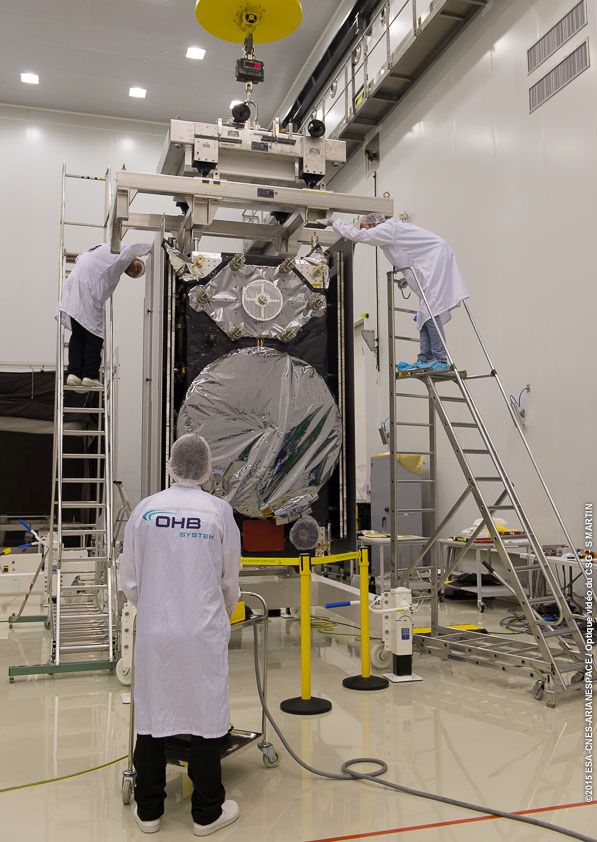 Galileo satellite being prepared for fit check. This test ensures the 7th and 8th Galileo satellites fit onto their dual-launch dispenser. The dispenser sits atop the Fregat upper stage of their Soyuz ST-B launcher. – © ESA/CNES/ARIANESPACE – Service Optique CSG
Galileo satellite being prepared for fit check. This test ensures the 7th and 8th Galileo satellites fit onto their dual-launch dispenser. The dispenser sits atop the Fregat upper stage of their Soyuz ST-B launcher. – © ESA/CNES/ARIANESPACE – Service Optique CSG
Since the seventh and eighth Galileo satellites arrived in French Guiana last month (February), they have undergone several tests – including one System Compatibility Test Campaign each, where they are linked up to the rest of the global Galileo ground segment as if they are already live in orbit.
The all-important fit check was passed in the middle of February. The two satellites were installed separately onto their dual-launch dispenser, to check they fitted correctly.
Last week saw the finalisation of their hardware and software, and the charging of their batteries – on which the satellites will be reliant from the short but crucial period from their launch to the unfurling of their solar arrays in orbit.
The pair of satellites is now ready to be transferred to the Spaceport’s S5A fuelling facility, where they will receive the fuel to keep them controllable during their twelve-year working lives.
NATO maritime group visits Varna, Bulgaria
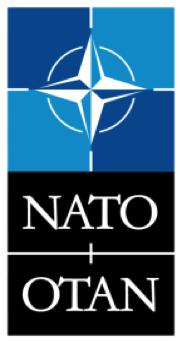 Ships assigned to Standing NATO Maritime Group Two (SNMG2) arrived in Varna on 7 March for a scheduled port visit during the Group’s deployment to the Black Sea.
Ships assigned to Standing NATO Maritime Group Two (SNMG2) arrived in Varna on 7 March for a scheduled port visit during the Group’s deployment to the Black Sea.
Led by Rear-Admiral Brad Williamson of the United States Navy, SNMG2 currently comprises the flagship USS Vicksburg, from Canada HMCS Fredericton, from Turkey TCG Turgutreis (illustrated), FGS Spessart of the Federal German Navy, from Italy ITS Aliseo, and ROS Regina Maria of the Romanian Navy.
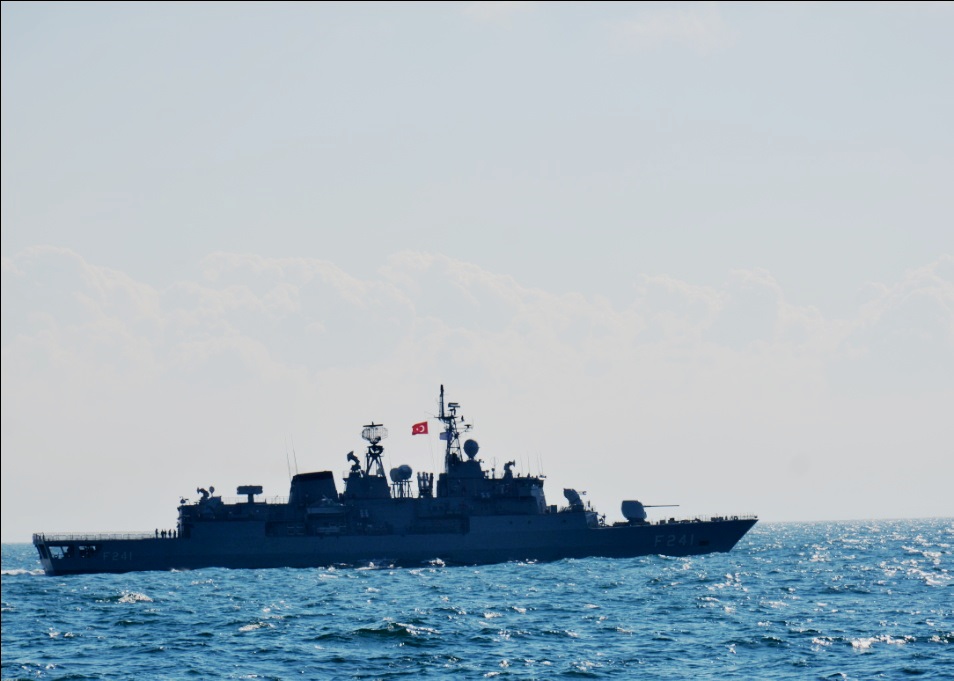 © US Navy – photo by Lt. Robyn Gerstenslager
© US Navy – photo by Lt. Robyn Gerstenslager
NTSB update on Delta
accident at LaGuardia
 As part of its ongoing investigation into the accident at LaGuardia Airport on 5 March where Delta Air Lines flight 1086, which originated in Atlanta, Georgia, veered off the runway during landing, the NTSB released from Washington an investigative update the following day.
As part of its ongoing investigation into the accident at LaGuardia Airport on 5 March where Delta Air Lines flight 1086, which originated in Atlanta, Georgia, veered off the runway during landing, the NTSB released from Washington an investigative update the following day.
Terma supplies radar to
Danish wind turbine
test centre
It was reported on 4 March that Terma will supply a radar system to the national test centre for large wind turbines in Østerild in Thy, Denmark. The system will ensure that aviation obstruction lights are switched on only when aircraft are in the vicinity. Usually, the obstruction lights are switched on around the clock.
The Danish Technical University (DTU), which is responsible for the installation and operation of the Østerild test centre, has decided to install a radar system together with companies Siemens and Vestas. DTU has contracted with Terma for the supply of a SCANTER 5202 X-band radar optimized for air surveillance.
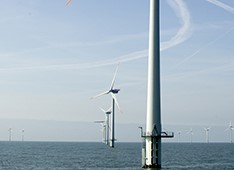
Successful launch confirmed
for Inmarsat-5 F2
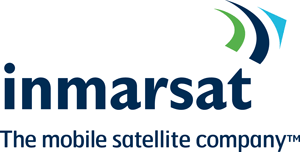 Inmarsat announced the successful launch of its second Global Xpress (GX) satellite on board an International Launch Services (ILS) Proton Breeze M rocket from the Baikonur Cosmodrome in Kazakhstan on 1 February.
Inmarsat announced the successful launch of its second Global Xpress (GX) satellite on board an International Launch Services (ILS) Proton Breeze M rocket from the Baikonur Cosmodrome in Kazakhstan on 1 February.
The Inmarsat-5 F2 (I-5 F2) satellite was correctly acquired by the Inmarsat
Paumalu ground station at 1810 GMT on 1 February, and launch provider ILS confirmed a successful spacecraft separation at 0402 GMT on 2 February.
Over the following weeks the Inmarsat operations team has commanded the satellite to perform a series of manoeuvres to raise I-5 F2 to a geo-synchronous elliptical orbit, and by the end of February it was expected to have completed deployment of its solar arrays and reflectors.
Fugro launches G4 satellite positioning augmentation service
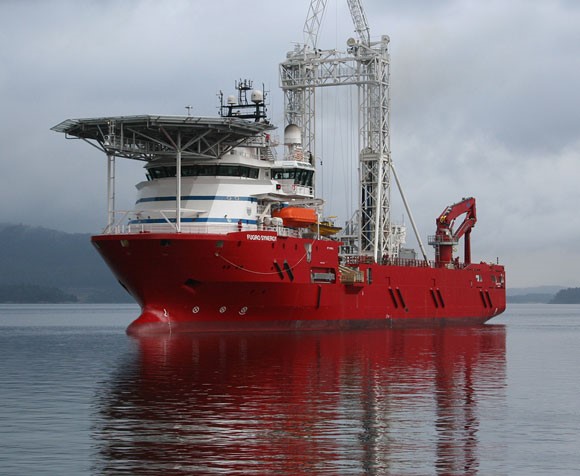 Fugro, the world’s largest integrated supplier of survey and geotechnical related services collects, processes and interprets data relative to the earth’s surface and the soils and rocks beneath and provides advice based on the results to clients in various market sectors around the world
Fugro, the world’s largest integrated supplier of survey and geotechnical related services collects, processes and interprets data relative to the earth’s surface and the soils and rocks beneath and provides advice based on the results to clients in various market sectors around the world
Fugro has further extended its technology leadership in the field of GNSS augmentation systems for offshore positioning applications with the launch of its G4 service. The new satellite correction service is the first to take advantage of all four GNSS (Global Navigation Satellite Systems): GPS, GLONASS, BeiDou and Galileo. GNSS augmentation services significantly improve positional accuracy compared to unaided GNSS receivers, which are commonly used in the consumer sector.
US FAA and integration of
small UAS into US
aviation system
 The Department of Transportation’s Federal Aviation Administration (FAA) announced from Washington on 15 February that it proposed a framework of regulations that would allow routine use of certain small unmanned aircraft systems (UAS) in today’s aviation system, while maintaining flexibility to accommodate future technological innovations.
The Department of Transportation’s Federal Aviation Administration (FAA) announced from Washington on 15 February that it proposed a framework of regulations that would allow routine use of certain small unmanned aircraft systems (UAS) in today’s aviation system, while maintaining flexibility to accommodate future technological innovations.
The FAA proposal offers safety rules for small UAS (under 55 pounds or approx. 25kg in weight) conducting non-recreational operations. The rule would limit flights to daylight and visual-line-of-sight operations. It also addresses
height restrictions, operator certification, optional use of a visual observer, aircraft registration and marking, and operational limits.
News aids to navigation
in Barranquilla
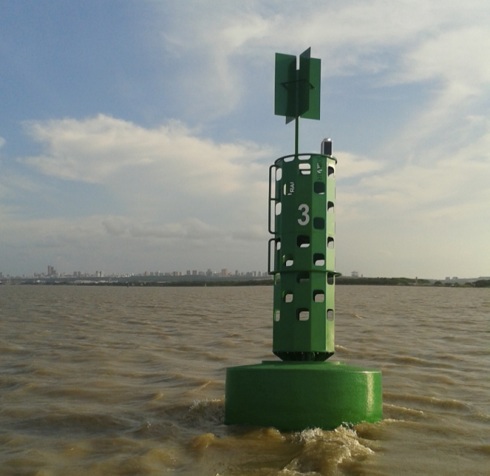
It was reported from Barcelona on 13 February that Colombia’s National Maritime Authority, DIMAR, had renewed the marine marking in Barranquilla (Colombia). The Barcelona-based company Almarin carried out the supply and establishment of twenty-eight buoys for the Magdalena river and also provided eight shore-based beacons. Included in this project were four buoys for the neighbouring Santa Marta Port.
With this project DIMAR continues its process of homogenization and improvement of the aids to navigation in Colombia, in accordance with IALA requirements, and as part of its primary goal of improving safety and security for mariners in Colombian waters.
![]()
Japan supports
Indian beaching yards
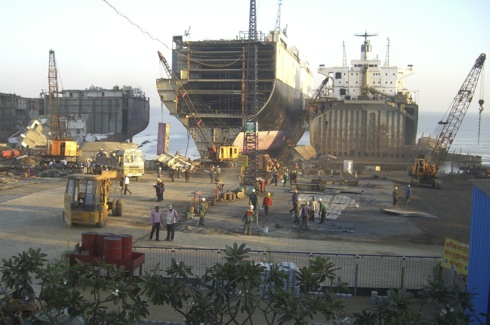
Ship recycling yards in India, Pakistan and Bangladesh need to be part of the global scheme of sound ship recycling and those yards in Alang which have invested in fully upgrading their facilities to meet the terms of internationally agreed rules should be rewarded by winning more business. This was the view expressed by Akihiro Tamura, Director of Shipbuilding Policy at the Japan External Trade Organisation (Jetro), shortly after returning from a fact finding trip to Indian recycling yards in Alang.
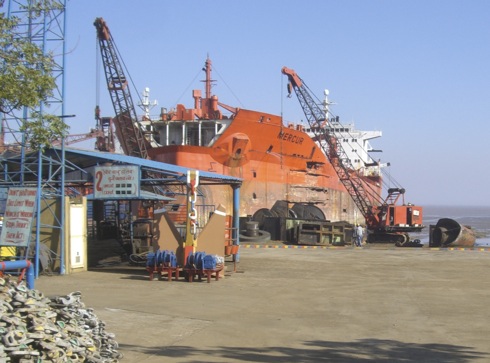
States show strong support
for ICAO conflict zone risk initiatives
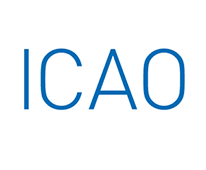
It was announced from Montreal on 3 February that Member States of the International Civil Aviation Organization (ICAO) confirmed their support for the Organization’s comprehensive conflict zone risk mitigation work programme, including a proposal to develop a prototype online resource for global conflict zone risk information.
More than 850 government and industry participants at ICAO’s High Level Safety Conference confirmed their strong backing for the UN aviation agency’s conflict zone objectives in recommendations that will now be guided by the 36-State ICAO Council.
Galileo satellites delivered
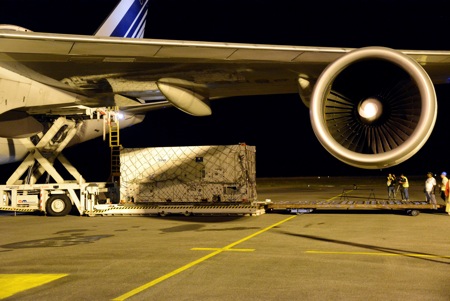 One of two Galileo satellites, safely in its protective container, being unloaded from their Air France Boeing 747 at Cayenne-Félix Eboué Airport in French
One of two Galileo satellites, safely in its protective container, being unloaded from their Air France Boeing 747 at Cayenne-Félix Eboué Airport in French
Guiana on 5 February 2015. © ESA – Paul Muller
Another two Galileo satellites have touched down in French Guiana ready to take their place in Europe’s satellite navigation constellation, it was reported by the European Space Agency (ESA) on 6 February.
The pair, safely cocooned inside their air-conditioned containers inside an Air France Boeing 747, landed at Cayenne-Félix Eboué Airport on 5 February. They were then taken by lorry to be installed in the cleanroom surroundings of Europe’s Spaceport to begin final preparations for launch.
The seventh and eighth Galileo satellites will be launched together by Soyuz in late March, resuming the interrupted building of the satellite navigation
constellation.
CILT argues Heathrow best option for additional capacity

The Chartered Institute of Logistics and Transport (CILT) has responded to the (UK) Airports Commission’s consultation on options for a new runway, which presented the Commission’s analysis of proposals shortlisted last year: two for expansion at Heathrow Airport and one proposal at Gatwick Airport. CILT has concluded that Heathrow is the best transport option, but that the impacts must be capped.
Based in Corby in the East Midlands CILT states that the Heathrow runway options are better from an overall transport perspective simply because the airport is closer to the centre of gravity of the population and economic activity.
Christmas in January?
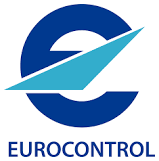 On 29 January 2015, Eurocontrol announced that there were no en route ATFM (air traffic flow management) delays in the European Network, as verified by post-operations analysis experts at the Network Operations Centre. This is only the third time since 2010 that this has happened – the others being on Christmas Day in 2012 and 2014.
On 29 January 2015, Eurocontrol announced that there were no en route ATFM (air traffic flow management) delays in the European Network, as verified by post-operations analysis experts at the Network Operations Centre. This is only the third time since 2010 that this has happened – the others being on Christmas Day in 2012 and 2014.
The Network Manager registered a traffic demand of 23,397 flights and a total network delay of 12,044 minutes (an average of about 31 seconds per flight), all attributed to weather and airports, none for en route.
£15 Million for
Port of Falmouth yard
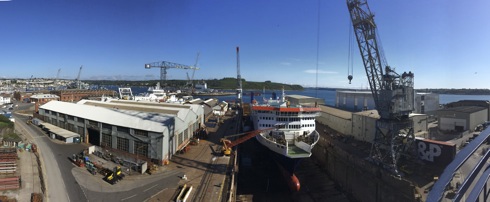
On 27 January the Chancellor of the Exchequer, George Osborne following a visit to the A&P Group in Falmouth (SW England) announced that the UK Government has awarded a &pind;15 million defence contract for the A&P Group that will create sixteen new jobs in Falmouth, Cornwall including six new apprenticeships. This work is for the installation of equipment to enhance four new tankers in order that they are ready for operations with the Royal Fleet Auxiliary on delivery.
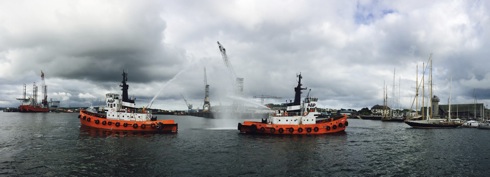
A&P Group is one of Europe’s leading ship repair companies, is a major provider of marine engineering services to the UK Ministry of Defence and Foreign Navies. The Group operates seven dry docks across three strategic locations in the UK: the Tyne, the Tees and at Falmouth.
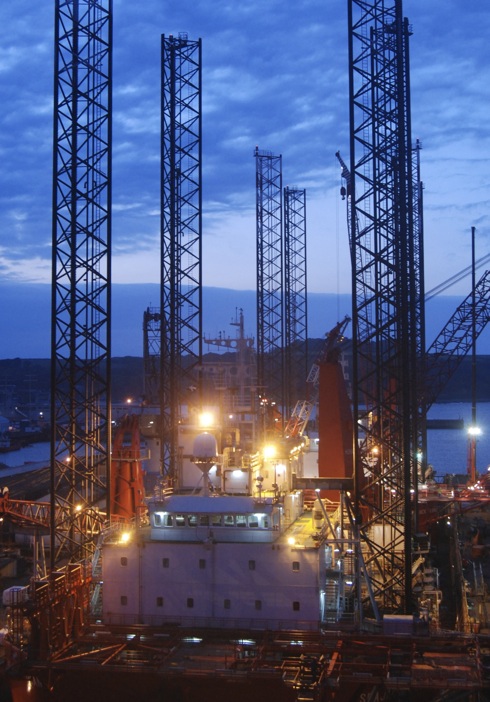
EU to support better port facilities in Dover and Calais
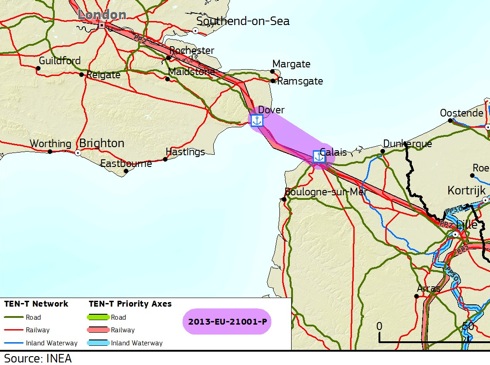
It was reported on 22 January from Brussels that the EU’s TEN-T Programme will back with over €14 million the improvement of port facilities in each of Dover in the UK and Calais in France. The developments include better traffic management, berth enhancements and a new rail freight connection between Calais and southern France.
This project will focus on innovative solutions to adapt and enhance the current transport infrastructure and improve the traffic management on both sides of the Strait of Dover.
This action, it is forecast, will have a positive impact by encouraging modal shift and reducing the carbon footprint of transport as well as decreasing road congestion and the negative environmental impact.
Plans for Southampton Air Cadet drone academy
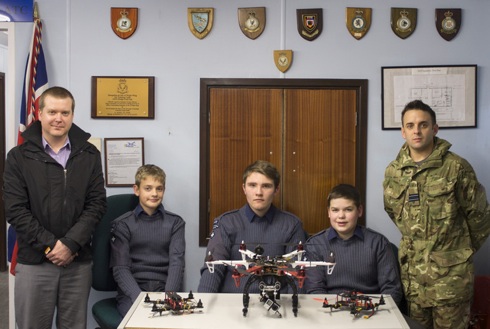 At left Michael Glen, Airside Operations Policy and Planning Officer, Southampton Airport and Civilian Instructor at 2428 Squadron with three cadets from the squadron and, at right, Flt Lt Lee Barfoot, the squadron’s Commanding Officer
At left Michael Glen, Airside Operations Policy and Planning Officer, Southampton Airport and Civilian Instructor at 2428 Squadron with three cadets from the squadron and, at right, Flt Lt Lee Barfoot, the squadron’s Commanding Officer
A British-owned drone consultancy group is attempting to improve public perceptions with the forthcoming launch of a new academy at a Southampton Air Cadet squadron. Pioneered by UAViate, the Hedge End, Southampton, drone academy will teach cadets how to build, fly and race next generation drones, it is understood.
Drones have received a poor press over recent months, with government officials even toying with the idea of banning the airborne devices.
European Parliament sees busuness aviation upswing

Business aviation in 2014 delivered its first positive growth figures since 2011, and the industry is optimistic that this is just the beginning of its upswing. Three of the four key European markets – France, the UK, and Italy – contributed
robust figures (up to 2.2%). However, since business aviation is intimately tied
to the health of the economy, the overall growth rate was a muted 0.7% on the
previous year.
Competitiveness was at the heart of the discussion. Often construed as meaning solely a level playing field for European versus foreign competitors, the more immediate challenge to business aviation is of a different nature, pertaining to distortions within the European market. A competitive air transport ecosystem must allow all its components to flourish alongside one another; access to air and ground infrastructure cannot be based on a zero-sum game. For business
aviation, a distinct, but sometimes overlooked segment of the air transport sector, this is crucial.

Rear Admiral Zirkle takes command of NATO submarine forces
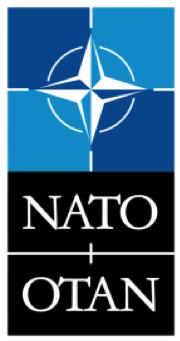 It was announced from Northwood, UK on 16 January that Rear Admiral Matt Zirkle, United States Navy, relieved Rear Admiral Bob Kamensky, United States Navy, as Commander, Submarine Forces NATO (COMSUBNATO) and Deputy Chief of Staff, Submarines, for NATO Allied Maritime Command (MARCOM), at an informal ceremony at the Headquarters in North West London.
It was announced from Northwood, UK on 16 January that Rear Admiral Matt Zirkle, United States Navy, relieved Rear Admiral Bob Kamensky, United States Navy, as Commander, Submarine Forces NATO (COMSUBNATO) and Deputy Chief of Staff, Submarines, for NATO Allied Maritime Command (MARCOM), at an informal ceremony at the Headquarters in North West London.
CANSO outlines five steps to transform ATM performance in the Middle East

It was announced from Dubai on 19 January that CANSO (the Civil Air Navigation Services Organisation) has outlined its proposal to reduce congestion and improve efficiency in Middle East airspace. To meet the rapid growth of air traffic in the region, CANSO is proposing five key steps to transform air traffic management performance: effective partnership; harmonisation of airspace; separation of regulation and service provision; flexible use of military airspace; and effective and co-ordinated use of technology.
13th international symposium on Vessel Traffic Services
This event with the theme >b>Sustainable Safe Navigation will be held at the
Kuala Lumpur Convention Centre, Kuala Lumpur, Malaysia from 8 – 12 August 2016 and attended by those involved in the provision, operation, maintenance or use of Vessel Traffic Services.
The Symposium organisers invite contributions by experienced VTS operators, users, planners and trainers from all parts of the world and to be considered by the Paper Selection Committee.
A brief list of topics will be found below with more details on the accompanying pdf.
Inmarsat announces enhanced maritime product roadmap

It was announced on 15 January 2015 by Inmarsat, provider of global mobile satellite communications services, that its enhanced maritime product list now has two new services designed specifically for Inmarsat’s Global Xpress network: Fleet Xpress and FleetBroadband Xtra.
Fleet Xpress is a hybrid service which will operate over the Global Xpress Kaband network, and incorporate Inmarsat’s L-band FleetBroadband service as back-up, providing an advanced connectivity service for maritime customers anywhere in the world. This service will be available when Global Xpress (GX) commences global commercial services early in the second half of 2015. Fleet Xpress will be an Inmarsat managed service sold through the company’s experienced GX Value Added Resellers (VARs).
To allow maritime customers to benefit from high-speed broadband connectivity between now and global commercial introduction of the Global Xpress network, Inmarsat has announced an additional service, FleetBroadband Xtra. This service will overlay capacity from the first Global Xpress satellite (Inmarsat-5 F1), which is already operational, in the Indian Ocean region, with the existing L-band connectivity. As the next two Global Xpress satellites are launched, covering the Atlantic Ocean and Pacific Ocean regions, FleetBroadband Xtra will expand to include the additional Ka-band capacity as each satellite enters commercial service.
CAA progress in general aviation
Significant progress was made in 2014 to make regulation of the UK’s General Aviation (GA) sector more proportionate and evidence-based the UK Civil Aviation Authority (CAA) said earlier this month (January).
Chages support the CAA’s new top level principles for GA regulation as it:
• Only regulates directly when necessary and does so proportionately
• Deregulates where it can
• Delegates where appropriate
• Does not gold-plate, and quickly and efficiently removes gold-plating that already exists
• Helps create a vibrant and dynamic GA sector in the UK.
Vessel in trouble on the Great Barrier Reef
At the time of writing, 12 January, the Australian Maritime Safety Authority (AMSA) is responding to a general cargo vessel, experiencing mechanical issues near the Great Barrier Reef.
Antigua and Barbuda-flagged general cargo vessel, Thor Commander, reported on 11 January she had damaged her main engine. The vessel is drifting approximately 31km north-east of Perkins Reef in the Swains Reefs group, about 379km north-east of Gladstone.
AMSA has tasked a tug from Gladstone to respond and two merchant vessels are nearby to assist after responding to a broadcast to shipping in the area. The tug is expected to arrive on Tuesday morning (13 January).
Estonia 41st member state of Eurocotrol
 It was announced from Brussels on 5 January that Estonia had become EUROCONTROL’s 41st Member State on New Year’s Day.
It was announced from Brussels on 5 January that Estonia had become EUROCONTROL’s 41st Member State on New Year’s Day.
With the accession of Estonia, EUROCONTROL covers all 28 European Union
states. This event reinforces EUROCONTROL’s status as being truly pan-European.
Even before becoming a member state, Estonia actively participated in the network and has contributed to improve Europe’s ATM performance. Over the last six years fifteen airspace design improvement packages have been implemented and two more are planned.
Advancing US airlines’
proactive safety culture
 To reach the next level of safety, the US Department of Transportation’s Federal Aviation Administration (FAA) issued on 7 January a final rule that requires most US commercial airlines to have Safety Management Systems (SMS) in place by 2018. The rule builds on the programmes many airlines already use to identify and reduce aviation risk.
To reach the next level of safety, the US Department of Transportation’s Federal Aviation Administration (FAA) issued on 7 January a final rule that requires most US commercial airlines to have Safety Management Systems (SMS) in place by 2018. The rule builds on the programmes many airlines already use to identify and reduce aviation risk.
